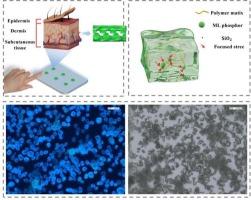表皮真皮联锁结构仿生多点定位光纤阵列传感器
IF 5
2区 物理与天体物理
Q1 OPTICS
引用次数: 0
摘要
本研究提出一种基于表皮-真皮互锁结构的被动式仿生多点定位光纤阵列传感器(BMPFAS),通过被动式光子触觉传感阵列实现6个压力接触点的光学空间定位。该传感器采用机械发光、波导传输、双通道检测的三元模块化设计。在仿生转导层,通过石英光纤和无机发光基质的嵌入式非均质集成构建了微结构光子发射阵列。由机械刺激诱导的机械致发光(ML)材料产生的光子耦合到光纤端面,通过级联1 × 2光耦合器组成的多路复用光纤网络传输,到达双光电倍增管(PMT)终端进行同步强度量化和信号解耦。通过梯度模量比(Eupper:Elower≈1.8:1)引入应力场调制机制,并结合自修复ML层,使动态表面变形下的发光强度增强154%。这项技术突破为智能机器人、可穿戴健康监测和人机界面开发中的触觉感知提供了被动光子解决方案。本文章由计算机程序翻译,如有差异,请以英文原文为准。

Bio-inspired multi-point positioning fiber array sensor with epidermis-dermis interlocking structure
This study proposes a passive bio-inspired multi-point positioning fiber array sensor (BMPFAS) based on an epidermal-dermal interlocking structure, which realizes optical spatial localization of six pressure contact points through a passive photonic tactile sensing array. The sensor adopts a ternary modular design comprising mechanoluminescence, waveguide transmission, and dual-channel detection. In the biomimetic transduction layer, a microstructured photonic emission array is constructed via embedded heterogeneous integration of quartz optical fibers and an inorganic luminescent matrix. Photons generated by mechanical-stimulus-induced mechanoluminescent (ML) materials are coupled into the fiber end-faces and transmitted through a multiplexed optical fiber network composed of cascaded 1 × 2 optical couplers, reaching a dual photomultiplier tube (PMT) terminal for synchronous intensity quantification and signal decoupling. A stress-field modulation mechanism is introduced via a gradient modulus ratio (), and combined with a self-healing ML layer, enabling a 154 % enhancement in luminescence intensity under dynamic surface deformation. This technological breakthrough provides a passive photonic solution for tactile perception in intelligent robotics, wearable health monitoring, and human–machine interface development.
求助全文
通过发布文献求助,成功后即可免费获取论文全文。
去求助
来源期刊
CiteScore
8.50
自引率
10.00%
发文量
1060
审稿时长
3.4 months
期刊介绍:
Optics & Laser Technology aims to provide a vehicle for the publication of a broad range of high quality research and review papers in those fields of scientific and engineering research appertaining to the development and application of the technology of optics and lasers. Papers describing original work in these areas are submitted to rigorous refereeing prior to acceptance for publication.
The scope of Optics & Laser Technology encompasses, but is not restricted to, the following areas:
•development in all types of lasers
•developments in optoelectronic devices and photonics
•developments in new photonics and optical concepts
•developments in conventional optics, optical instruments and components
•techniques of optical metrology, including interferometry and optical fibre sensors
•LIDAR and other non-contact optical measurement techniques, including optical methods in heat and fluid flow
•applications of lasers to materials processing, optical NDT display (including holography) and optical communication
•research and development in the field of laser safety including studies of hazards resulting from the applications of lasers (laser safety, hazards of laser fume)
•developments in optical computing and optical information processing
•developments in new optical materials
•developments in new optical characterization methods and techniques
•developments in quantum optics
•developments in light assisted micro and nanofabrication methods and techniques
•developments in nanophotonics and biophotonics
•developments in imaging processing and systems

 求助内容:
求助内容: 应助结果提醒方式:
应助结果提醒方式:


